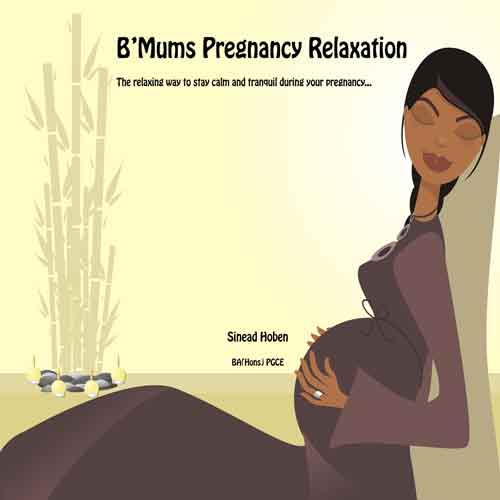Using Fluconazole When Breastfeeding
Fluconazole (Diflucan™) is a synthetic antifungal agent that can be used for the treatment of a variety of Candida albicans and other fungal infections. For the breastfeeding mother in particular, it can be used to treat recurrent Candida infections of the nipples, and, if such a thing exists, as I believe it does, Candida infections of the milk ducts.
Candida (yeast) Infections of the Nipple and Ducts
Candida infections of the nipples may occur any time while the mother is breastfeeding. Candida albicans likes warm, moist, dark areas. It normally lives on our skin and other areas, and 90% of babies are colonized by it within a few hours of birth. It, like many other germs that live on us normally, only becomes a problem under certain circumstances.
Candida infections of the skin or mucous membranes are more likely to occur when there is a breakdown in the integrity of the skin or mucous membrane—another reason why a good latch is very important from the very first day. Many Candida infections would, perhaps, not have occurred if the mother had not had sore nipples and a breakdown of the skin of the nipples and areola. The oozing of liquid that occurs often in cracked nipples encourages Candida albicans to change from its harmless form to a disease causing form.
The widespread use of antibiotics also encourages the overgrowth of Candida albicans. Many pregnant women, women in labour, and new mothers, as well as their babies receive antibiotics, sometimes with very little justification.
Diagnosis of Candida Infections of the Nipples and/or Ducts
There is no good test which helps makes the diagnosis. A positive culture from the nipple(s) does not prove your pain is due to Candida. Neither does a negative culture mean your pain is not due to Candida. The best way to make a diagnosis is by history.
The presence or absence of a Candida infection in the baby is not helpful. A baby may have thrush all over his mouth, but the mother may have no pain. A mother may have the classic symptoms of a Candida infection of the nipples, and the baby may have no thrush or diaper rash.
The typical symptoms of a Candida infection of the nipples are:
Nipple pain that begins after a period of pain free nursing. Though there are a few other causes of nipple pain that begin later, Candida infection is definitely the most common. The nipple pain of Candida may begin without an interval of pain free nursing, however.
Burning nipple pain that continues throughout the feeding, sometimes continuing after the feeding is over.
Pain in the breast that is “shooting” or “burning” in nature and which goes through to the mother’s back and shoulder. This pain is usually worse toward the end of the feeding, and worsens still more after the feeding is over. It also tends to be much worse at night. This pain may occur without any nipple pain.
Pain, as above, which is made much better with the use of gentian violet, though unfortunately, gentian violet does not seem to work as well as it used to.
Treating Candida Infections
Our first approach to treating these infections is gentian violet (Handout 6: Using Gentian Violet 2005) plus all purpose nipple ointment and sometimes grapefruit seed extract (see Handout 3b: Treatment for Sore Nipples and Sore Breasts and Handout C: Candida Protocol). This approach is safe, works rapidly, and almost always, though there seems to have been a decrease in the effectiveness of gentian violet over the past few years. For this reason, I now use the combination of the ointment and the gentian violet as well as the grapefruit seed extract. A good response to gentian violet confirms that the mother’s nipple pain is caused by Candida since little else will respond to gentian violet. It thus also justifies the use of fluconazole, if needed. Even if the above treatment does not help, fluconazole should not be used alone to treat sore nipples and should be added to treatment on the nipples, not used instead. I have not found nystatin to be particularly useful either in treatment of the baby’s mouth or in the treatment of the mother’s nipples. Clotrimazole cream alone is also not particularly effective in my opinion, but others obviously feel differently.
Fluconazole
Fluconazole is an antifungal agent that is taken systemically (by mouth or intravenously). It stops fungi (such as Candida albicans) from multiplying, but does not actually kill them. This accounts for the fact that sometimes it takes several days to have an effect. Fluconazole powder is also available and can be mixed with the all purpose nipple ointment instead of miconazole powder.
Side Effects
Fluconazole is generally well tolerated, but there is no such thing as a drug that never has side effects. Concern about liver injury is exaggerated, since this complication seems quite rare, and usually occurs in people who are taking other medications as well, and who have taken fluconazole for months or longer, and who have immune deficiencies. But it is a possibility that needs to be kept in mind and if it does occur, it can be very serious.
Vomiting, diarrhea, abdominal pain and skin rashes are the most common side effects. These are not usually severe, and only occasionally is it necessary to stop the medication because of these side effects. Allergic reactions are possible but uncommon. Call or email immediately if you have any concerns.
Fluconazole in the Milk
Fluconazole does appear in the milk, and this is as it should be, since the idea is to treat infection in the ducts and nipples. It is thus superior to ketoconazole, which gets into the milk in only tiny amounts. The baby will obviously get some, but this drug is now being promoted for use in babies for the treatment of simple thrush. There have been no complications in the baby reported from exposure to fluconazole in the breastmilk. Continue breastfeeding while taking fluconazole, even if you are told that you should stop.
Dose of Fluconazole
Candida albicans is learning to become resistant to fluconazole, and the dose we use has increased over the past few years. Only a few years ago, 100 mg daily for 10 days cured 90% of women of their symptoms. We have now found this to be inadequate. For resistant cases, a newer antifungal agent, itraconazole, can be used, though it may not be the answer either as it does not have a very powerful effect against Candida.
Your prescription will be for fluconazole 400 mg as a first dose, followed by 100 mg twice daily until you are pain free for a full week, which usually means at least two weeks. This seems, on the basis of our experience, a fairly good guarantee against relapse. If you have nipple pain continue with the “all purpose nipple ointment” (± gentian violet and grapefruit seed extract) while you are taking fluconazole. However, this means that although most mothers require only the usual two weeks, some need longer treatment. Occasionally it may take up to seven to ten days for the pain to even start going away. Call if there is no relief in seven days. If there is no relief in 10 days, none at all, it is very unlikely fluconazole is going to be of any help.
It is sometimes useful to treat the baby as well. The dose for the baby would be 6 mg/kg as a first dose, followed by 3 mg/kg/day as one dose for the same period of time as the mother.
Note: The mother’s two week prescription is likely to cost between $300 and $350, though there is now a generic fluconazole available which is less expensive.
Questions? (416) 813-5757 (option 3) or drjacknewman@sympatico.ca
or my book Dr. Jack Newman’s Guide to Breastfeeding (called The
Ultimate Breastfeeding Book Of Answers
in the USA.)
Handout #20 Fluconazole revised January 2005
Written by Jack Newman, MD, FRCPC. © 2005
This handout may be copied and distributed without further permission, on the condition that it is not used in any context in which the WHO code on the marketing of breastmilk substitutes is violated.




